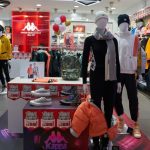Globe International Limited, the Australian company that is home to the Globe, Salty Crew, FXD, and Impala Skate brands, among others in the board sports, street fashion, outdoor, and work-wear markets, reported continued struggles with top-line growth in its fiscal first half ended December 31; however, it reported it was successful in building gross margins that led to an improved bottom-line.
The Group reported strong improvement in profitability and cash flows from operations as it executed a strategic agenda.
From an outsider’s view, the work performed by the Globe over the last year looks like a microcosm ahead for much larger active lifestyle companies, including VF Corp., parent of Vans, The North Face, Dickies, and Timberland, or Wolverine Worldwide, parent of Merrell, Saucony, Sweaty Betty, and Wolverine. It’s just a matter of scale. But the same process is in place at the Globe that is netting results on gross margins and net profits as brands rationalize, cut SKUs, clean up inventory, and right-size staff as sales growth recovers more slowly.
Globe reported net sales for the fiscal 2024 first half were A$108.0 million, down 10.4 percent from net sales of A$120.5 million in the prior-year comparable period. Excluding extraordinary clearance in the prior year’s H1 period, sales were down 3.5 percent, which was significant in North America and Europe. Despite tough market conditions, apparel and footwear brands had either flat or modest increases in net sales globally for the period.
Earnings before interest and tax (EBIT) were A$7.3 million, representing 6.8 percent of net sales; this was A$6.4 million ahead of the 0.7 percent return on sales tallied in the prior-year H1 period.
Globe posted a net profit after tax of A$4.9 million, compared to a net loss after tax of A$0.2 million in the prior-year H1 period.
“As foreshadowed to shareholders at our October 2023 AGM, Globe International is strongly ahead of its EBIT position compared to the same time last year,” noted CEO Matt Hill. “Most importantly and key to our longer-term strategic agenda, the profit improvement comes largely from a strong turnaround in regional performance in both North America and Europe. Meanwhile, Australia continued to be a stable profit contributor to the group. This was a major step forward in our strategic goal to see more even contribution of EBIT from all three regions and is forecast to continue in the second half of FY24. Most gratifying was the continuation of a strong dividend return to shareholders that this improved performance has facilitated.”
The EBIT turnaround reported for the half-year resulted from improved gross profit margins and a reduced cost base, driven by less inventory clearance, lower freight costs and favorable FX movement, including the successful execution of product development initiatives.
The company reduced expenses by rationalizing underperforming brands, improving operating efficiencies and restructuring its European division while continuing to invest in growth brands to a normal level.
Regionally, Globe Europe halved its percentage sales decline for the H1 period, with sales declining 16.9 percent, cycling a 30.7 percent decline in the prior-year H1 period. The company had a reorganization of this business unit underway in the year-ago period to drive sales, margin growth and operational improvements, and it appears to be netting results.
Europe segment revenues were A$11.7 million in the first half, compared to A$14.0 million in the prior-year H1 period. Europe was the biggest decliner in the prior year’s H1 period but was supplanted by North America for that honor this year.
- Europe segment EBIT rose slightly to A$8.0 million in the first half.
North America segment revenues were down 22.0 percent to A$39.0 million in the half-year period, on top of the 9.1 percent decline to A$50.0 million in the prior-year H1 period.
- North America segment EBIT swung to an A$3.6 million profit in the first half, compared to an A$1.8 million EBIT loss in the prior-year period.
Australasia segment revenues swung to the positive column in the first half, posting sales growth of 1.6 percent to A$57.3 million after declining 14.9 percent to A$56.4 million in the prior-year H1 period.
- Australasia segment EBIT was essentially flat for the period year-over-year.
“With all three regions and all major brands profitable, the result demonstrates not only strong financial improvement but also a much higher quality result, with the execution of many of our strategic priorities,” Hill added. “During the half-year, we saw margins improve, cost base rationalized, and significant continued investment in our key growth brands of Salty Crew, FXD, and It’s Now Cool. Furthermore, during the half-year, a successful restructuring of our European division was executed with new management delivering a remarkable turnaround for the division after a massive loss in the prior year H1 period. Combined with an extremely healthy balance sheet at the end of the first half, we enter the second half of this financial year in a robust position to keep pushing our key brands forward.”
While Globe International said it will always value skateboard hardgoods and core relevance to the company’s culture, it has been a goal of the company to have fewer hardgoods brands and to retain a few key hardgoods brands of scale. Globe said the objective has been for hardgoods to become a lower proportion of sales to ensure less volatility in the company’s financial performance.
“This is achieved by continuing to invest and nurture our skate hardgoods programs while also growing the apparel side of our business to a greater relative scale,” the company wrote in its report. “Over the last seven years, Globe International has strategically transformed away from its reliance on volatile hardgoods sales and multiple small hardgoods brands to a revenue baseline of more stable global apparel and only a handful of larger hardgoods brands of scale.”
Hill explained, “Seven years ago, we had A$150 million of revenue with almost one-third coming from over a dozen micro hardgoods brands. Since then, we have grown revenue in our apparel business significantly while rationalizing our hardgoods brand portfolio. Today, we are left with two leading global hardgoods brands of scale in Globe and Impala, which have proven capable of delivering strong profit conversion on big revenue booms if circumstances prevail (as exemplified during the COVID boom) but only representing approximately 10 percent of our revenue today.
“Fundamentally, Globe International has transformed into a business reliant on apparel and footwear for growth and stability while still preserving our connection to skate heritage culture, brands, and product development. We have a base for consistent growth and improved performance for shareholders through worldwide apparel and footwear brands such as FXD, Salty Crew, It’s Now Cool, and Globe with high revenue potentials while not losing our heritage, connection, and culture in skate.”
Stronger Balance Sheet
The Group’s cash position, net of working capital borrowings, was A$20.0 million on December 31, compared to A$10.7 million at the end of the 2023 financial year.
Cash utilization during the half-year was said to be driven by non-operating factors (dividends, capital expenditure, leases, and property loan payments), while cash generated from operations was A$16.5 million, driven by an A$11.2 million reduction in working capital associated with a significant reduction in inventory holdings, combined with decreases in both trade receivables and payables.
Consistent with company expectations, utilization of working capital facilities continued to decrease through the first half to a “negligible level” by the end of December. The company expects that the utilization of these facilities will remain minimal and will only be required to support minor inter-month fluctuations over the remainder of the financial year.
“All operating divisions in Australia, North America, and Europe, as well as all key brands, look set to continue their current positive contributions in the second half of this financial year,” Hill said while looking ahead to the balance of the fiscal year. “This is facilitated by the preservation of the strong margin gains made in the first half of the year, combined with continued efficiency-driven cost reductions and the continued strong investment in, and demand for, our key global pillar brands.”
Image courtesy Globe International Ltd.
















